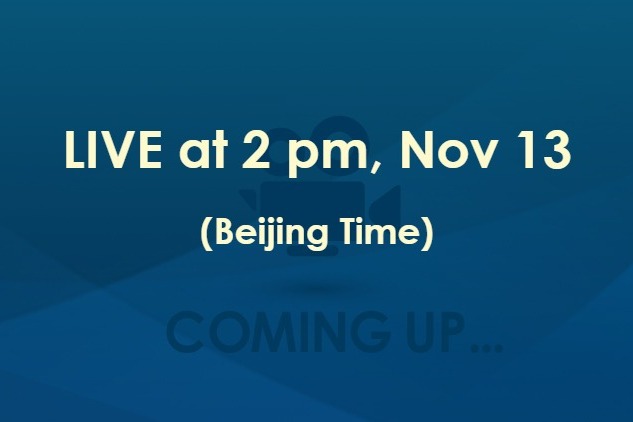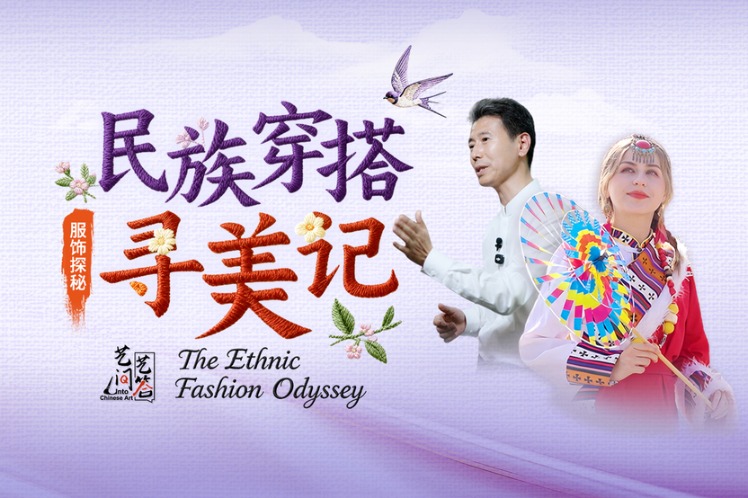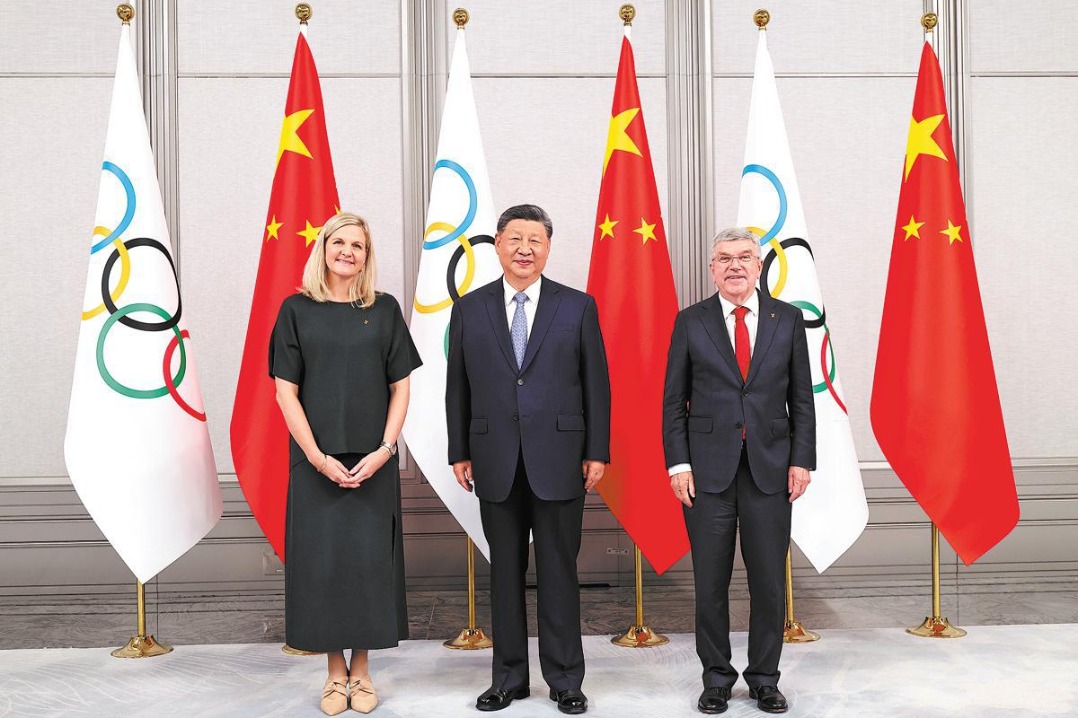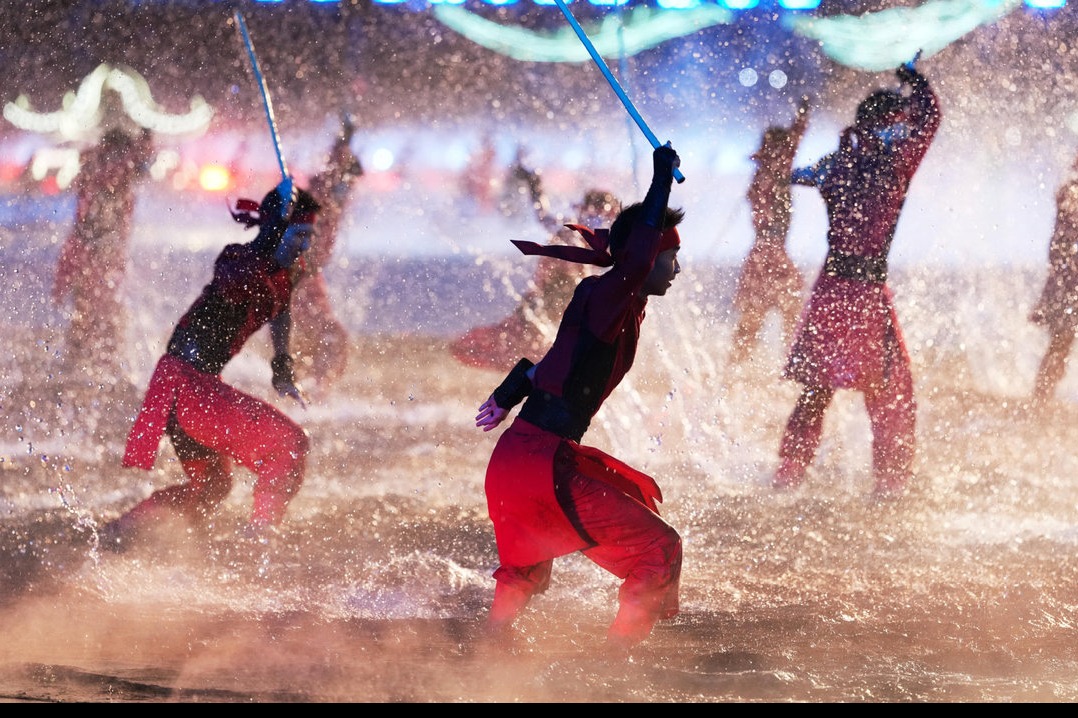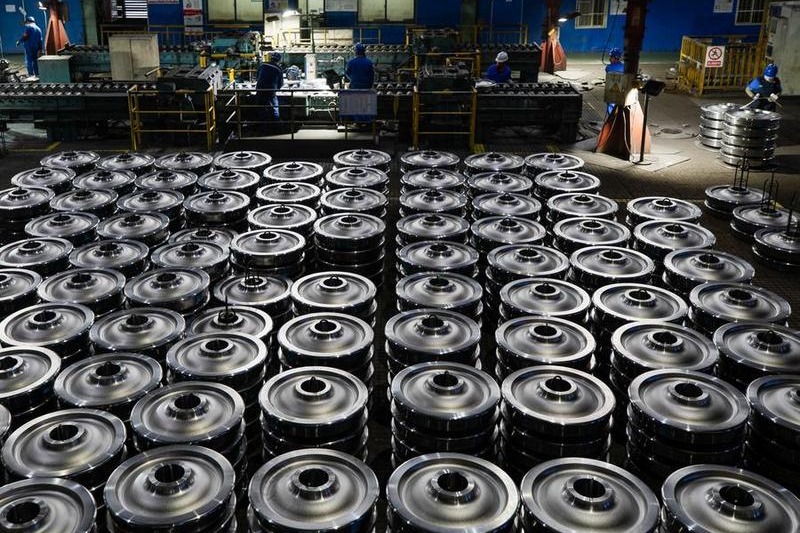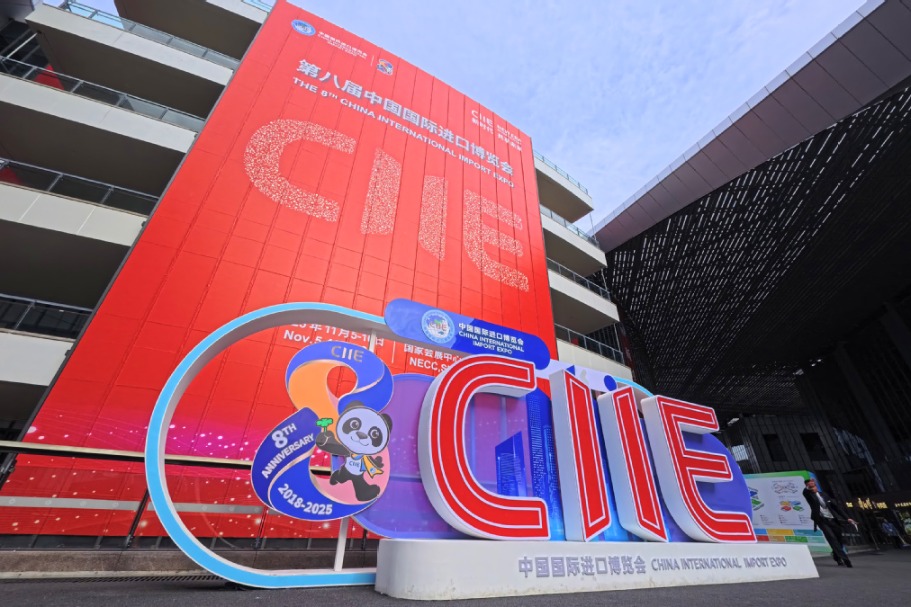Designers bring their wares to the city of canals
Suzhou event focuses on integration and interaction, and there's talk about the pandemic and beds as well.

Suzhou Design Week, which aims to promote the city's new cultural economy that reflects the Yangtze River Delta integration strategy, was held between Oct 30 and Nov 6 and, perhaps not surprisingly, COVID-19 managed to snatch a co-starring role.
The event, sponsored by Suzhou municipal government, emphasized exploring the path of creative design for urban renewal, community building and the digital transformation of the creative design industry in the 5G era. This would be done by increasing international collaboration to help Suzhou create a new urban business for creative design culture.
Under the theme "Industry Empowerment, Urban Interconnection", the exhibition area was placed in the streets of Suzhou, a reflection of how the new cultural economy would work.
A city block was transformed for the week, and more than 27 exhibitions, 25 events, three live broadcasts and 16 sub-venues were staged throughout the city.
Vittorio Sun Qun, deputy director of the Executive Committee of Suzhou Design Week, said: "We aim to have people participate and interact. In a place with history, you can both see culture and the dynamism of young people."
At the opening ceremony, the Yangtze River Delta Cultural Tourism Internet Partner Action Plan was officially launched.
This year's event paid closer attention to in-depth integration of content planning with Suzhou than was the case last year, striving to more closely mirror local characteristics and promote Suzhou's innovative creativity and urban culture.
The main forum of the week drew public attention to the increased awareness of healthy consumption awakened by COVID-19 and the increasing importance of digitalization prompted by people working from home.
On Oct 31 in the Suzhou Culture and New Economy Lecture Hall a forum organized by the Curatorial Laboratory of the School of Design and Creativity of Tongji University in Shanghai explored the effects of design on human interaction at different levels.
In a forum titled Human to Human, People to People, more than 10 designers, architects, artists and academics in various fields from around the globe expressed their thoughts on how design plays a role in promoting and shaping human interaction.
With social distancing and viral isolation, physical contact is now more restricted, and people are increasingly relying on computer screens to communicate with one another. Experts discussed the role of design in cultivating new ways of creating or promoting intimacy and communication.
With the help of scientific and technological means and artistic expression, Bao Xiying, a graduate student in service design of the Royal Academy of Art, created an immersive experience device that can translate individual emotions for Wuhan urban communities. She hopes this helps in rebuilding personal emotions and interpersonal communication damaged by the epidemic.
Lucy McRae, a visiting professor from the Southern California School of Architecture in Los Angeles, a science fiction artist and film producer, presented an art installation drawing attention to the way interpersonal communication is conducted in the digital age: with a lack of physical contact.
The advent of the epidemic has accentuated the differences in the way we all live and at the same time revealed new ways of living that are emerging.
Beatriz Colomina, a professor of architectural history, theorist and curator, and Mark Wigley, a professor of architecture, talked about their findings on the role of beds in the age of social media.
Multiple economic and cultural influences, backed by communications technology and smart devices, mean the bed has become an increasingly important venue for activities including work and leisure, they said.
For creative workers, communicating with others is part of their work, and the existence of a community among creators helps promote creativity. In response to the challenges and opportunities that the epidemic has brought to creative workers, Paola Antonelli, senior curator of architecture and design at the Museum of Modern Art in New York, and Alice Rawsthorn, a design critic, launched the Emergency Design project to communicate with design practitioners through online dialogues.
The co-founder and executive director of the Design Trust in Hong Kong, Marisa Yiu, through the "critical self-control" project, said she hopes to use 76 prototype designs created by different designers in response to the challenge of the epidemic to enhance the cohesion and social responsibility of the creative community.
Ian Wong, an industrial designer with rich practical and teaching research experience in Australia and China, said: "In the ever-changing social, technological and geopolitical realities, how can we design in various uncertain situations in the future, and at the same time establish a more harmonious relationship between groups, people, landscapes, ecosystems and other species?"
At the architectural practice level, whether it was reMIXstudio Critical Studio of Beijing, or Peoples' Architecture, which has offices in Beijing and Boston, all have adopted more flexible and interactive design concepts as they engage in the fast-changing and uncertain development of Chinese urban space.
In their view, the urban space that exists for a short time and is even built cheaply may be no less influential than the impact of traditional architectural spaces to the local community, and they adopted this concept again in this year's Suzhou Design Week.
StudioDrift of Amsterdam in the Netherlands uses algorithms to drive drones. By simulating various natural phenomena it uses technology as a carrier to express its reflections on the state of human existence and development: the seemingly disorderly natural phenomenon may still be inspiring the current development direction of human society as in the past.
Maria Lisogorkaya of Assemble, an interdisciplinary architecture, design and art collective in Britain, explored a new interdisciplinary division of labor, and Ewan McEoin, a curatorial member of the National Gallery of Victoria Triennial in Australia, presented a series on the latest interdisciplinary solutions driven by new systems, materials and technologies.
Since Suzhou Design Week was inaugurated in 2018 it has adhered to the positioning of "city of design and city of industry", focusing on the three core topics: urban regeneration, industrial innovation and life aesthetics. Among them, the Yangtze River Delta Innovation City Network benchmarked the UNESCO Creative City Network and launched the first Chinese implementation of a creative city network based on regional economic integration.
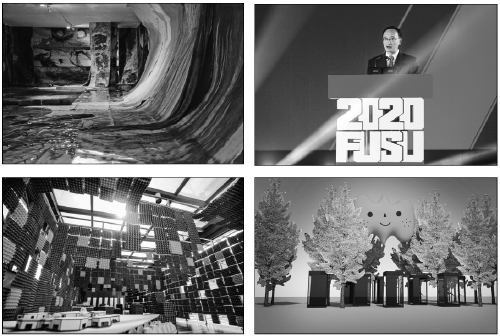
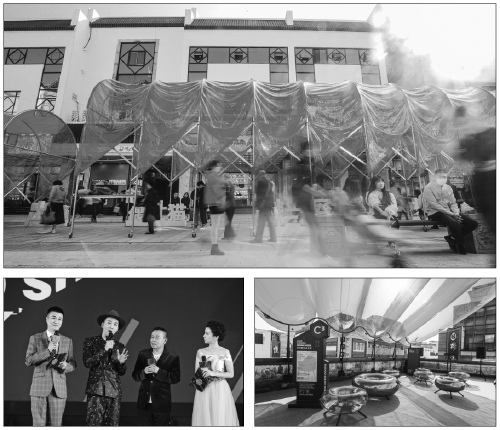
Today's Top News
- Supercarrier to be put through paces
- Game changers for China's sports industry
- EU should not give platform to 'Taiwan independence' separatists
- Nation drives global energy transition
- Tariff-troubled US fears not-so-happy holidays
- 'Looking China' brings American youth closer to Chinese culture
















